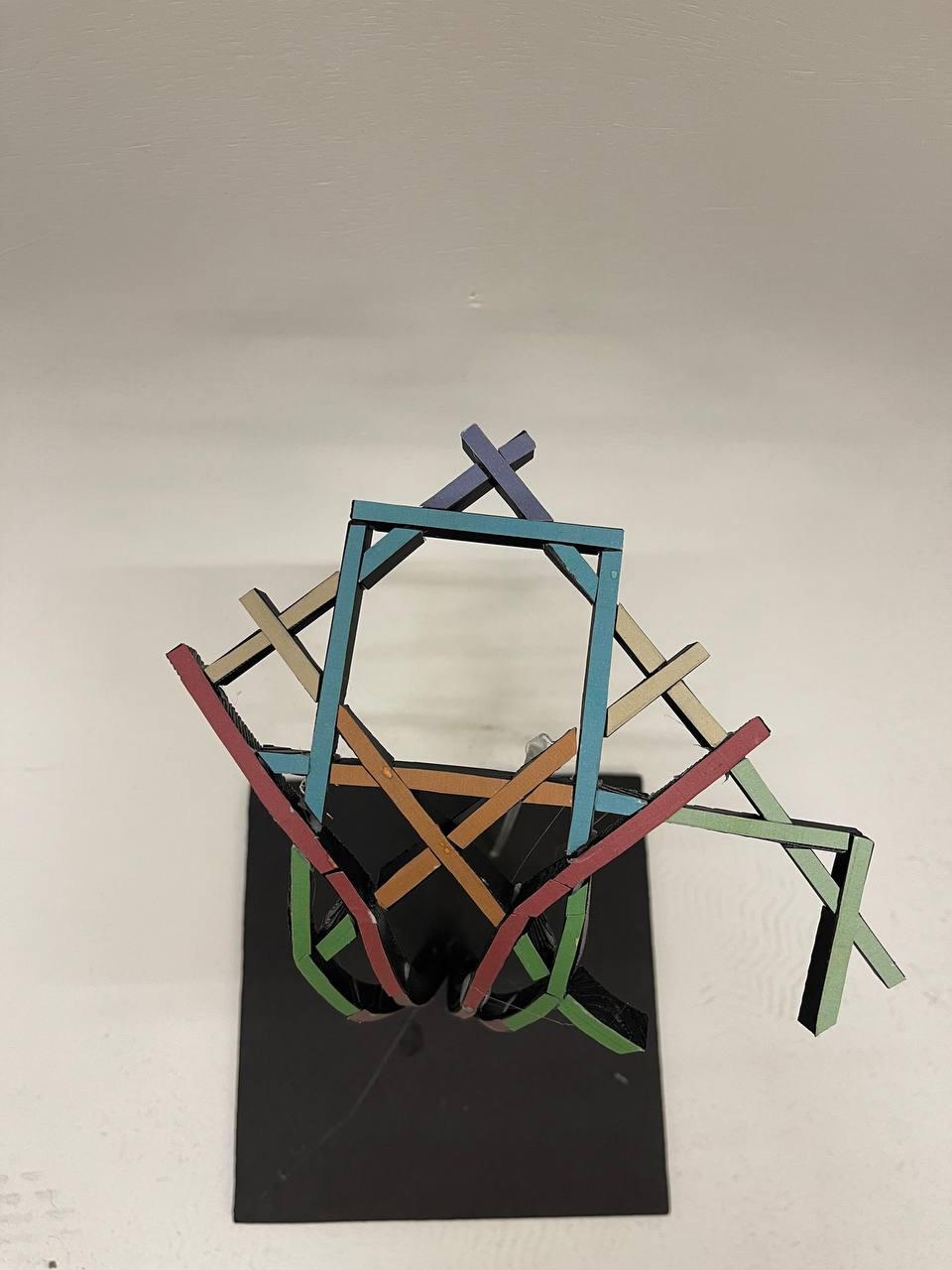
2 minute read
03 Case Study of Tectonic Assembly
The Cambridge Cenral Mosque by Marks Barfield Architects (2019)
ARC380 | Technology Studio III
Nicholas Hoban
Academic | Group Project
October 2022
The project investigates the tectonic assembly of the eco-friendly Cambridge Central Mosque, designed by Marks Barfield in Cambridge, England. The mosque showcases a sophisticated system of interlocking timber trusses and steel connections that provide support for a series of vaulted roof domes.
Comprising 16 prefabricated timber pillars, the mosque spans across its atrium. The team deconstructed one pillar to illustrate the assembly process, starting with the vertical pieces that support the pillar and concluding with the horizontal pieces on top.
In my contribution to the project, I implemented a color-coding system for each prefabricated part of the pillar and generated 16 prototypes based on these parts.
To replicate the prefabricated timber elements on a smaller scale, we utilized steam-bending as a technique to explore wood properties, including bending, strength, and layering. The objective was to comprehend the joinery system of the columns and its correlation with the steel ring.










Spatial Analysis in Urbanization
04
Richview Region — Kipling Avenue and Islington Avenue at Dixon Road
ARC200 | Drawing and Representation II
Mohammed Sorror
Academic | Individual Project
December 2021
In this project, I conducted an analysis of the Richview Region, specifically focusing on Kipling Avenue & Islington Avenue at Dixon Road. Examining the rich vegetation, I scrutinized the typological divisions of houses and their relationship to Wincott Park at the center of the region.


During my visit, I observed the presence of an existing river in the region, which is gradually disappearing. Additionally, to access the other part of the region, one must traverse the park, a substantial green space.


My assigned task was to propose a design intervention that would interact with and potentially alter the existing typological layout. In response to this challenge, I put forth a proposal to introduce a river, creating a Venice-like atmosphere within the region. The primary objective of this intervention is two-fold: first, to contribute to the development of a utopian neighborhood, and second, to enhance the overall mobility within the region. Importantly, this proposal aims to achieve these objectives while paying due respect to the preservation of the landmark represented by the existing, river.










